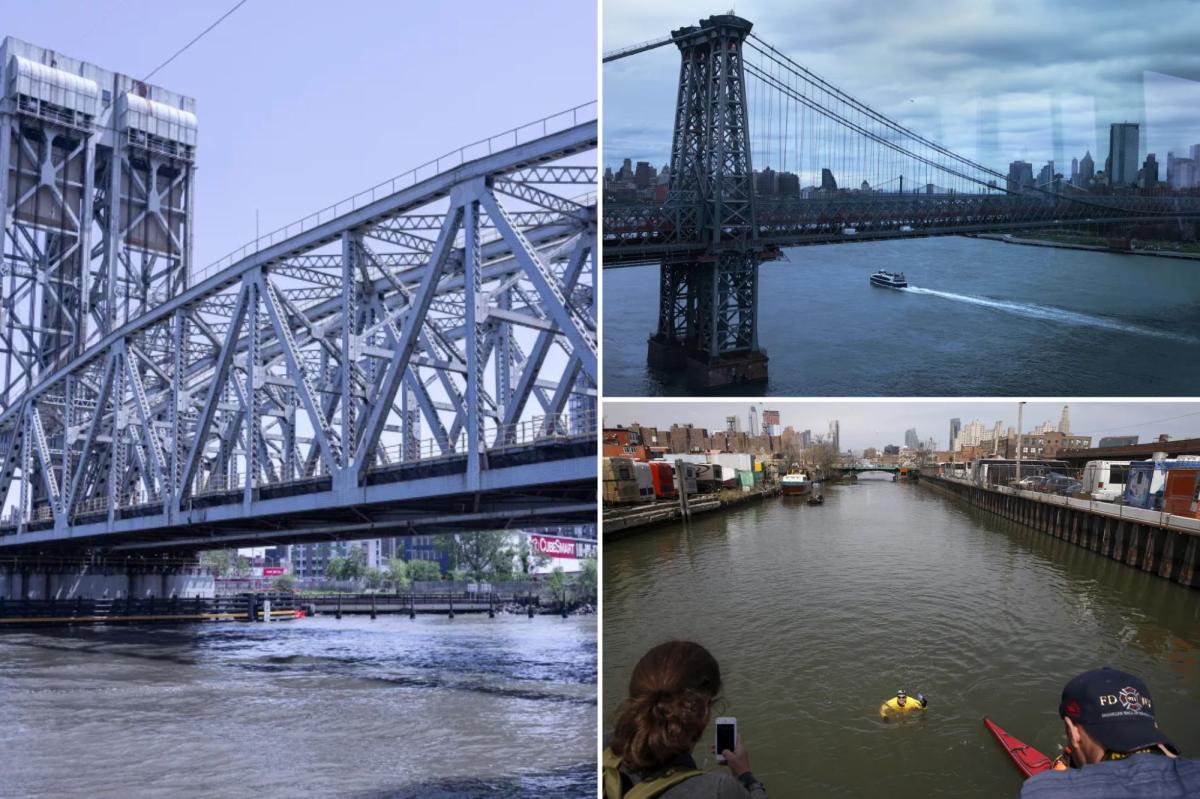Time to take off your hazmat suit and put on your swimsuit.
The state has declared that the notoriously polluted Harlem River is now officially a “swimmable” waterway — but activists say the river is still marred by sewage and storm water and the new declaration will prevent further efforts to fully clean it.
The river between Manhattan and The Bronx near Yankee Stadium got the questionable upgrade last week, when the state Department of Environmental Conservation reclassified 30 bodies of water.
The Harlem River is now considered as a swimmable waterway under new DEC classifications. LP Media
But rather than celebrating the announcement as a win for cleaner water, activists blasted the decision, claiming that the waterway still gets enormous amounts of dirty storm runoff — and that the situation will not get any better because the new designation means no further remedial efforts.
“The Harlem River currently receives more than two billion gallons of raw sewage and polluted stormwater every year,” Mike Dulong, the legal program director for Riverkeeper, explained to The Post.
“That will unfortunately be the case for the foreseeable future. So what the next generation can expect is: the same water quality today is going to be the same water quality in 20 years.”
With the new ruling, the Harlem River is now considered a “wet weather (WW) limited use” waterway — meaning swimming is allowed only when it hasn’t rained.
More than two billion gallons of raw sewage and polluted stormwater are dumped into the Harlem River every year. REUTERS
Previously, the river was a “Class I,” meaning only “secondary contact recreation,” like boating and fishing, was allowed.
While the change does not mean bathers can immediately jump into the Harlem River, the DEC says it will pave the way for swimming to become more commonplace as the agency ramps up cleanup efforts.
The similarly disgusting Gowanus Canal was also on the list of waterways that received an upgraded classification, now being listed as a fishable” area, though with warnings that there are hazards like fecal coliform still present in the water.
The difference between the two waterways, explains Dulong, is that the Brooklyn canal is currently undergoing slow remediation to reverse its status as a superfund site.
The Gowanus Canal was also reclassified to best support fishing. REUTERS
Dulong argued that the Harlem River is already clean enough to support swimming on dry days, but that “all bets are off” when the rain overflows the sewage systems and sends a deluge of pollution and toxins into the water.
The only way to clean up the Harlem River is to overhaul the Bronx’s outdated sewage systems — a move that would cost around $9 billion.
“There is nothing in this rulemaking that will improve sewage and stormwater infrastructure that could improve water quality. The people who are kayaking in the Harlem River as part of the Harlem River rowing community they’re going to see no improvements at all,” Dulong said.
“What the next generation can expect is: the same water quality today is going to be the same water quality in 20 years,” said Mike Dulong. Christopher Sadowski
Riverkeeper is asking that the DEC reconsider the infrastructure upgrades, and is pursuing long-term litigation with the US Environmental Protection Agency over the water quality classifications.
The state, however, is celebrating the reclassifications, saying the changes “raise the bar and allow — for the first time — the potential for safe fishing, boating, or swimming in some of the city’s resurgent waterways.”
“These landmark regulatory changes are a result of decades of progress in reducing pollution and a clear sign that New York City’s waterways are the cleanest they’ve been in more than a generation,” DEC Commissioner Amanda Lefton said in a statement.

